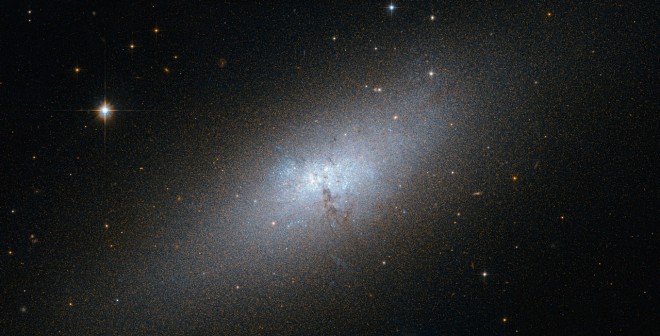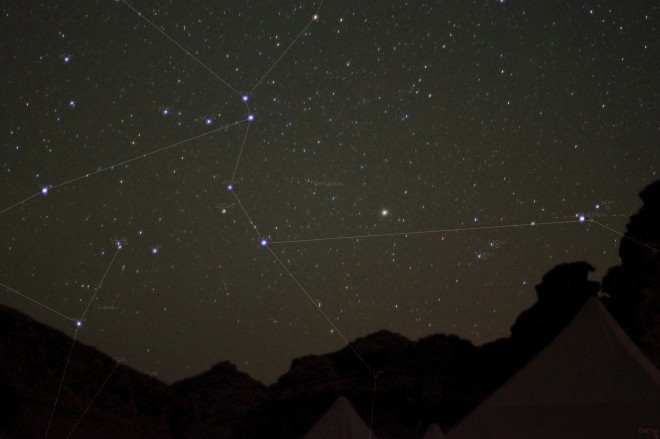Fans of Arthur C. Clarke’s classic science fiction novel 2001 A Space Odyssey might recognize these as the words of astronaut David Bowman, awestruck by revelations of the deep mysteries of space. A team of astronomers from Tel Aviv University and UCLA discovered more than a million newborn stars inside a mysterious gas cloud named, “Cloud D.”
Where are those stars?
From anywhere in the Middle East you can see the constellation Centaurus low on the southern horizon at about 8:30pm local time in June.
Centaurus is above the peak of the leftmost tent in this photo taken by the author in Jordan’s Wadi Rum desert. The mysterious NGC 5253 is slightly above the upper left of this photo and probably too dim to see without a good telescope but under dark skies or with binoculars you might see it’s neighbor, the enormous globular star cluster Omega Centari aka NGC 5139.
This round fuzzy globular cluster of 10 million stars is 15,800 light years from Earth and 150 light-years across. Ptolemy of Alexandria Egypt first catalogued it as a “luminous spot” in 150 A.D.
Professor Sara Beck of Tel Aviv University’s Department of Astronomy and Astrophysics collaborated with a team of researchers including UCLA’s Professor Jean Turner and a team of researchers at the Submillimeter Array to study another member of the Centarus celestial neighborhood, mysterious “Cloud D” within the compact blue galaxy known as NGC 5253 and hidden behind the dust and gases of star creation.
The researchers found that the cloud is remarkably efficient at creating stars, with more more than 7000 type “O” stars, each a million times brighter than our sun.
Some of the star clusters within this cloud are remarkably young, only about 3 million years old and stars are being created at ten times the rate observed for similar clusters. Beck’s team postulates that a stream of material drawn into the dwarf galaxy is contributing to this high rate of star formation. Such intensely fertile dwarf galaxies are expected to eventually explode from the pressure of numerous bright supernovae. One theory says that the massive Omega Centauri cluster is a remnant of a dwarf galaxy. The team’s paper is published in the journal, Nature.
Photo of NGC5253 Credit: ESA/Hubble & NASA
Photo of Centaurus constellation over Wadi-Rum tents by Brian Nitz



